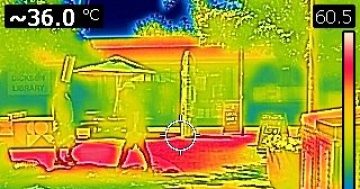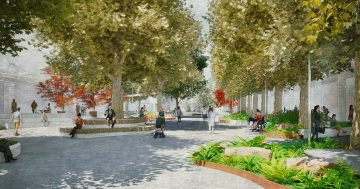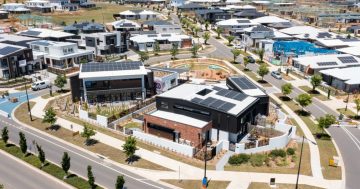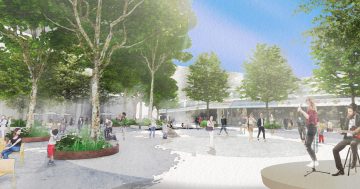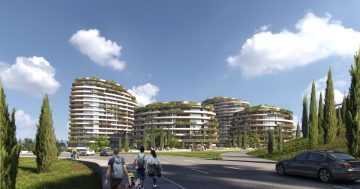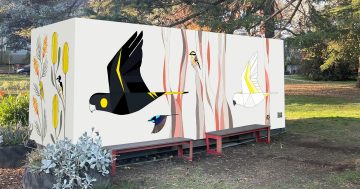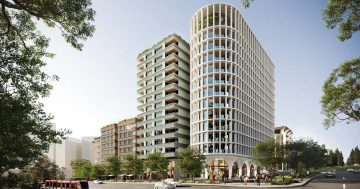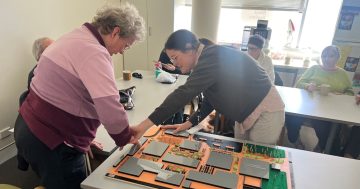
MaRTy on the job in Civic, collecting temperature data to help the City Renewal Authority plan for cooler places. Photos: City Renewal Authority.
A robot called MaRTy is helping the City Renewal Authority identify the city’s hot spots, and no they’re not cool places to hang out.
The Authority wants to know where the summer heat is felt in the city, which can make its outdoor places decidedly uncool, and uncomfortable.
MaRTy, the only heat-monitoring tool of its kind in Australia, is rolling round seven sites across the city and Dickson shops, measuring outdoor heat as part of a thermal comfort study.
The study is being led by Mosaic Insights and the Climate-Resilient Cities Lab at the University of New South Wales, who are experts in green infrastructure planning and urban climate science.
The Authority’s Executive Branch Manager of Design and Place Strategy, Lucy Wilson, said this study would help the Authority plan for outdoor spaces in the City Centre that were cool and pleasant for residents, workers and visitors.
“The City Renewal Authority is committed to invigorating and revitalising the City Centre, but it is important to ensure that new developments also provide comfortable outdoor spaces,” Ms Wilson said.
“This study will help us understand the current temperatures and heat conditions in locations across the City Centre.”
Ms Wilson said MaRTy was taking the city’s temperature in February because this was the time of year that people’s outdoor comfort was most affected by hot conditions.
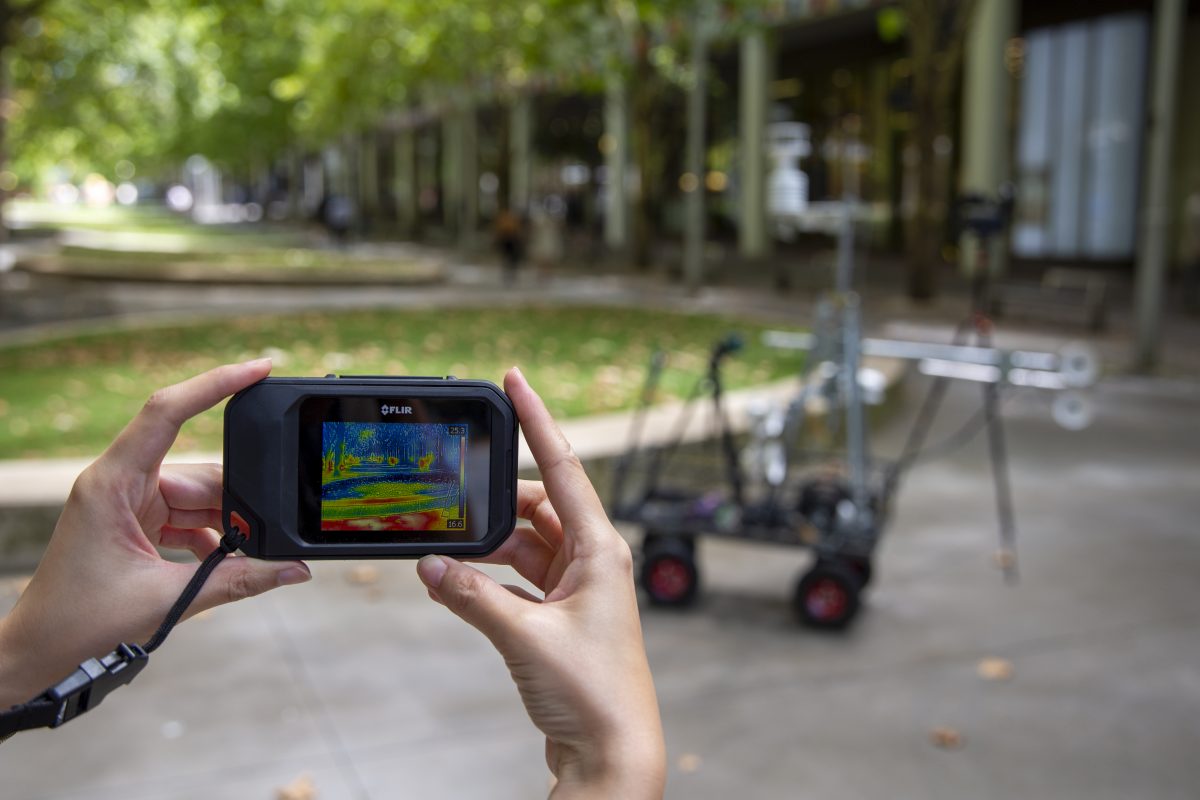
Cool science: A heat map generated from data collected by MaRTy.
The knowledge MaRTy gathered would contribute to climate-wise design of places and buildings to help reduce the urban heat impact.
“We will also be able to measure improvements in outdoor thermal comfort over time,” she said.
The MaRTy technology was developed in 2016 in Phoenix, Arizona, and the name refers to ‘mean radiant temperature’.
MaRTy simulates the way the human body experiences heat in cities and measures air temperature, humidity, wind speed, and solar radiation.
Dr Negin Nazarian from UNSW said this was becoming increasingly important as the climate warmed.
“The urban heat island effect is the change brought about through urbanisation, buildings, roads and infrastructure,” he said. “When combined with hotter average temperatures through climate change, it is increasingly important to use design strategies to reduce the urban heat effect.
“In urban environments, radiation and heat reach us from direct sunlight but reflected sunlight also reaches us from surfaces.
“Many built materials such as bricks, asphalt and concrete amplify the strength of reflected heat from the sun while features like shade, greenery and water bodies can reduce heat.”
Mosaic Insights General Manager Jan Orton praised the Authority for “delivering important data-driven urban and landscape upgrades”.
“It is critical that we use data and evidence to inform how our cities and landscapes are designed so they can be as cool as possible and can function into the future in a climate changed world,” she said.
The Authority plans to repeat this analysis in the coming years.












